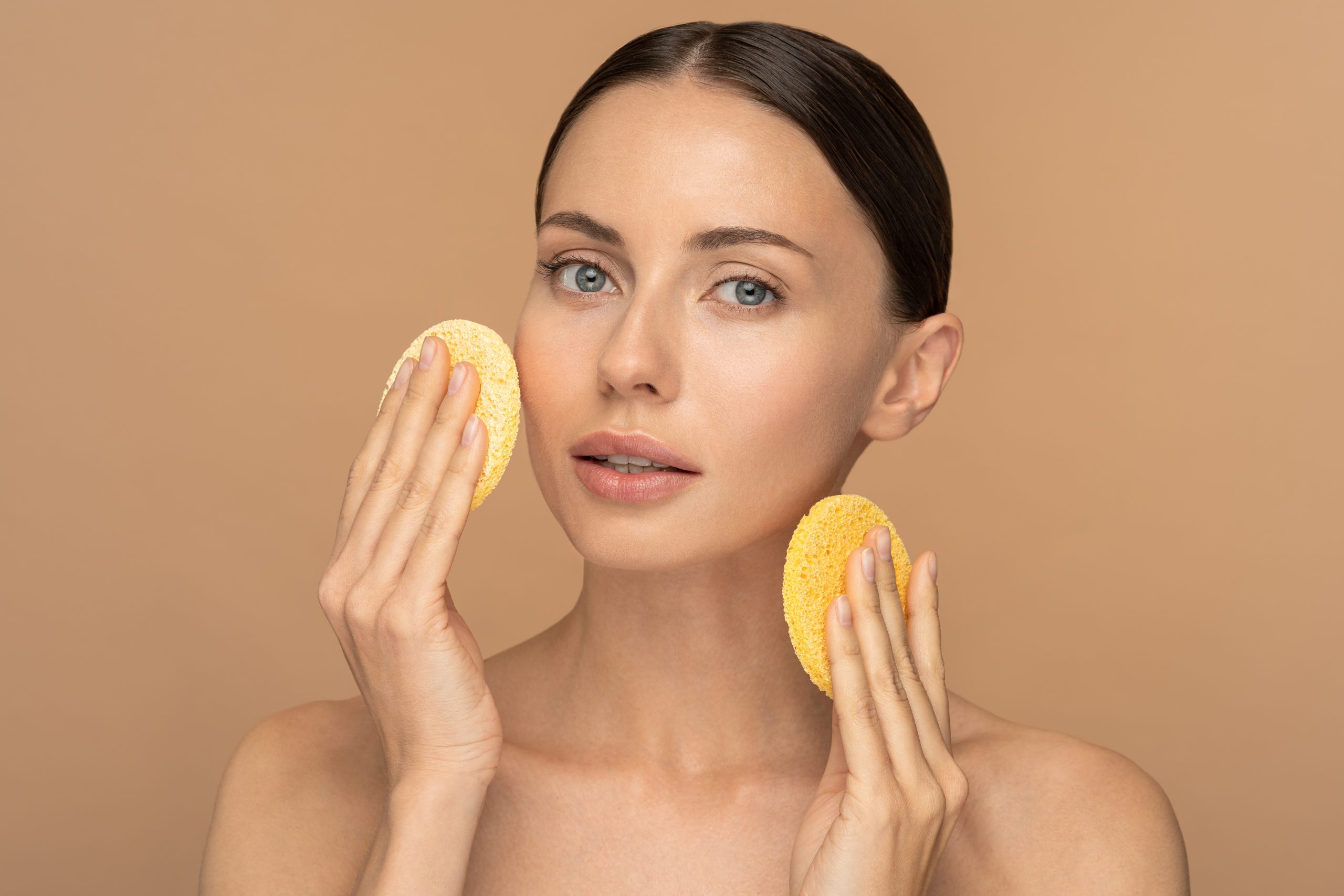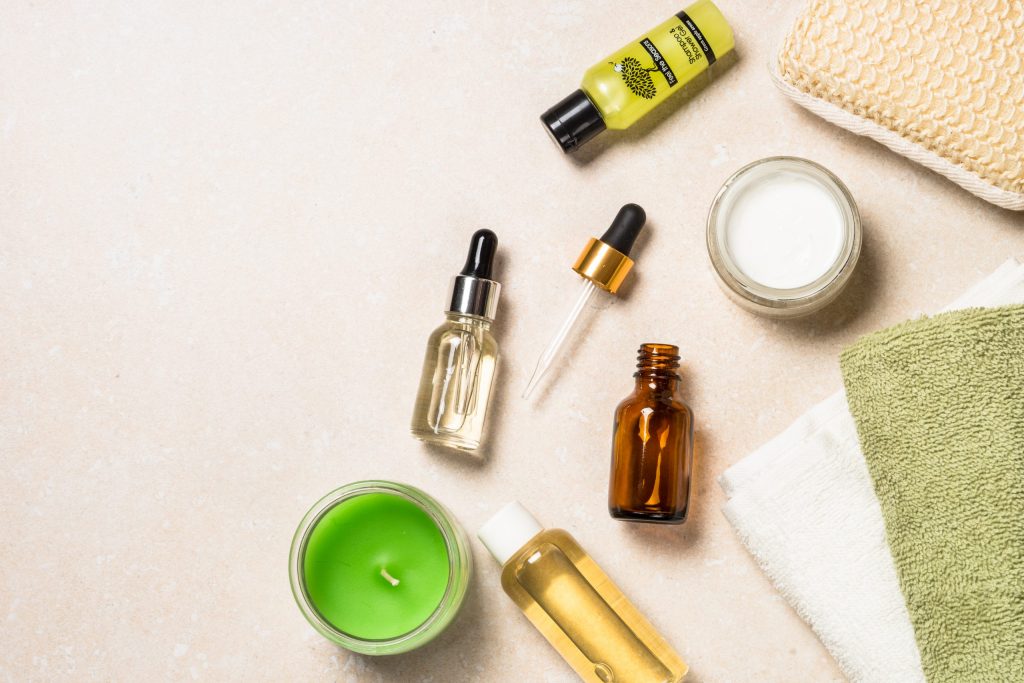There are lots of ways and skin treatments to get the smooth, glowing, and healthy skin that we all want. However, Exfoliation is the best way to improve your skin’s texture and tone, and the best part is you can do it right at home by yourself. This is very easy to do, but too much or the wrong method of exfoliation can harm your skin.
In this article, we will discuss, why it is so important, as well as how to properly exfoliate your skin with expert tips.
What is Exfoliation?
Exfoliation means removing the dead top surface cells from your skin. For removing them, you can use a chemical or physical exfoliant. For chemical exfoliation, you can use alpha-hydroxy acids (AHAs), beta-hydroxy acids (BHAs), or enzymes to loosen the glue-like substance that holds dead skin cells together. A physical exfoliant is also known as a manual exfoliant, this method needs a tool, liquid, gel, or scrub.
Why You Should Exfoliate Your Skin?
Our skin can repair and replace itself, this can cause a layer of dead skin cells all over your body. Here are some benefits of exfoliation, which helps to make way for brighter, smoother skin:
- Fades aging signs and sports
- Reduce the visibility of fine lines and wrinkles
- Allows better absorption of skincare products like moisturizers, antioxidants, and collagen-boosting serums
- Unclogs your pores and prevents acne
- Minimizes pore size and superficial scars
Exfoliation is very important to improve skin dullness, dryness, and aged skin appearance. Getting a brighter skin is everyone’s desire and exfoliation helps to get it. When our skin is covered with dead skin cells, your skin care products may not be able to penetrate and do their work. It allows your products to work more effectively by removing the dead layer of skin. If you have acne-prone skin, exfoliation can help clear clogged pores, which often lead to breakouts, and minimize their size. It can also help to fade acne scars faster by increasing skin cell turnover and stimulating collagen production.
What Type of Exfoliant you should invest in?
Before investing in any exfoliant, there are a few things to consider when it comes to how you do this. There are two different ways to exfoliant your skin, chemical exfoliation and manual exfoliation. Here we’ll explain each in detail that will help you to choose one, that will work best for you.
What is Chemical Exfoliation?
Chemical exfoliation needs chemicals to break down the surface skin cells, say experts. Highly sensitive and acne-prone skin works very well with chemical exfoliants, as they are less likely to irritate. If you have this type of skin, you should choose a chemical exfoliant that contains glycolic acid, lactic acid, and mandelic acid as well as fruit enzymes like pineapple, papaya, or pumpkin. Chemical exfoliators are nice because you don’t need to scrub plus you get the benefit of something like glycolic acid, which can stimulate collagen production and trigger anti-aging. Salicylic acid targets oil glands, which can improve acne.
The most common type of chemical exfoliant is the combination of AHAs and BHAs. Both AHAs and BHAs work by combining with the structural lipids in your stratum corneum (the outermost layer of your skin) and dissolving them so that the dead skin cells break away.
Alpha Hydroxy Acids (AHAs)
AHAs are among the most common types of light chemical exfoliators. The AHA family of acids is derived from natural sources, such as fruit, milk, or sugar. Two of the most widely used skin care products are glycolic acid (made from sugar) and lactic acid (made from milk). AHA-based facial exfoliators are great for oily skin types.
Beta Hydroxy Acids (BHAs)
Like AHAs, BHAs also offer a light chemical peel, it is a very effective treatment for acne-prone skin. They are synthetic derivative that comes from the same source as aspirin.
Enzymes
If you have very sensitive skin, it is often recommended to look for facial exfoliants based on the enzyme. These enzymes come from a natural source, like fruits, and work in the same way as acid-based exfoliators but at a slower pace. So it allows for an extremely safe and gentle exfoliating process.
What is Physical Exfoliation?
Physical or manual exfoliation needs a hard substance to manually remove dead skin cells. This method involves a liquid, gel, or scrub with granules like microbeads or sugars. Another uses a skin care tool such as a sponge, towel, or brush. Manual exfoliation is exfoliation by scrubbing, and it is usually done with beaded cleansers.
However, scrubbing skin doesn’t suit everyone. The main problem with manual exfoliation is that people can scrub too hard or too much, and the combined action of scrubbing and the beads can lead to skin irritation and a breakdown of the precious skin barrier. Once this happens, you may find yourself with sore skin or experiencing breakouts and rashes. We all love doing scrub, and they work well when it is done right, but it’s very important not to overdo it.
If you are choosing a physical exfoliant, the best product for you depends a great deal upon the thickness and sensitivity of your skin. There are different types of particles are used for exfoliation like larger granules (pumice or magnesium oxide crystals) which are great for the oily skin type, Smaller Granules (ruby crystals, jojoba beads), they are less likely to irritate, cut or abrade your skin, seeds and crushed Nutshells, they gently remove the outermost layer of skin.
How To Properly Exfoliate Your Skin?
The right way to exfoliate will depend on whether you’re using a chemical or physical exfoliant. Once you’ve determined this, simply follow the appropriate steps below.
For chemical exfoliant
- Wash your face with your regular cleanser
- Whether your chemical exfoliant is in form of a pre-moistened cloth or pad, or a gel or serum formula, apply this all over your entire face, neck, decollete, and even the tops of your hands.
- Leave it for a few minutes to completely absorbed into the skin before moving on to the next step in your regimen, which may be a treatment serum or cream.
For the best result, always check and follow the product label to make sure you’re using the exfoliant correctly.
For Physical Exfoliant
- Wash your face first with your regular cleanser
- Take a quarter-size amount of your face scrub and apply it to your face in circular motions, avoid the eye area
- Gently massage the scrub onto the skin for 30 seconds or one minute.
- Rinse it off with warm water and gently pat your skin with a clean towel
- Now apply a hydrating mask, serum, or cream
Experts recommend exfoliating once or twice a week, this is because exfoliating too often or too hard may cause micro-tears on your skin’s surface and remove your skin’s protective layer. They may show in the form of redness, breakouts, small bumps, stinging, and burning. If you have inflammatory acne, hypersensitive, or rosacea, you should ask your skin experts to use it and how often to use it.



